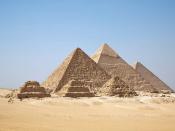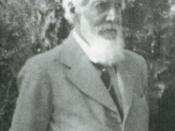William Matthew Flinders Petrie, born June 3rd 1853 in Charlton, Kent, was the grandson of Captain Matthew Flinders, the first man to chart Australia. Petrie was named after his father William, who was a civil engineer and professional surveyor and his maternal grandfather Matthew, a famous navigator and explorer. Petrie's mother Anne had a love for science, namely fossils and natural minerals. When he was 4, Petrie became so ill that his mother became convinced he was a weak child, since she was a scholar herself, she taught him at home and introduced him to Hebrew, Latin and Greek. Both Anne and her husband William taught and encouraged their son the play around with rocks, minerals and anything else that interested him. At a young age, Petrie developed an interest in archaeology, particularly in the area of ancient weights and measures. Petrie had an inquisitive mind and developed an insatiable appetite for facts, toying with mathematics, discovering geometry and devising chemical experiments at the age of 15.
His father taught him the use of a sextant and how to map sites, so by the time he was 18 Petrie spent days alone making surveys around his home.
Petrie started out working as a practical surveyor in southern England. During this time he became interested in and started studying Stonehenge. In 1967 Petrie had read with interest books written by a family friend, Charles Piazzi-Smyth, the Scottish Astronomer Royal, on the Great Pyramid of Giza, whose measurements, the author swore, epitomized all mathematical and astronomical knowledge, past, present and future. Petrie wrote to him that "pi" must have been used in calculating the pyramid. Between 1880 and 1883, Petrie went to Egypt to confirm these results, since the book was heavily criticized. He traveled to Giza and the Great Pyramids,


